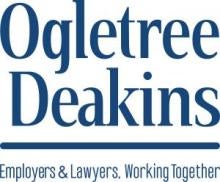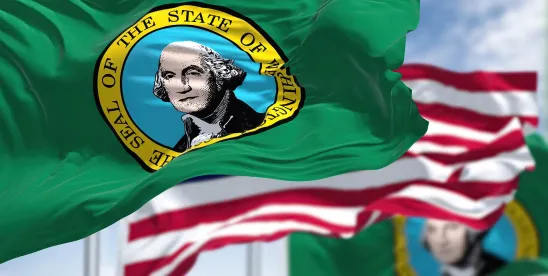On May 20, 2025, Washington Governor Bob Ferguson took the final step toward implementing House Bill (HB) 1213’s expansion of the state’s paid family and medical leave program when he greenlit funding for the program as part of the state appropriations budget for the 2025-2027 biennium. With this funding, the new law will take effect on January 1, 2026.
Quick Hits
- Washington State’s HB 1213 expands job protection rights under the state’s paid family and medical leave program.
- The amended leave program reduces the minimum increment of time off from eight consecutive hours to four consecutive hours.
- HB 1213 also broadens health insurance coverage requirements, along with a variety of other miscellaneous changes.
HB 1213 expands the Washington Paid Family and Medical Leave (WPFML) program, which is a state-administered program that provides Washington employees with paid time off from work for serious personal and family medical leave.
Here is an overview of the key changes to WPFML made by the new law.
Expanded Job Protection Rights
HB 1213 expands the job protection rights under the WPFML program in several ways. First, it gradually requires more employers to provide job protection. Currently, the law only requires employers with fifty or more employees in Washington to provide job protection. Under the new law, the size of employers required to provide job protection will be implemented over a three-year period, as shown in the table below.
| IMPLEMENTATION DATE | EMPLOYER SIZES |
| January 1, 2026 | 25-49 Employees |
| January 1, 2027 | 15-24 Employees |
| January 1, 2028 | 8-14 Employees |
Second, HB 1213 lowers the eligibility requirement for employees to qualify for job protection. Generally, employees do not qualify for job protection unless they have worked for their employer for at least twelve months and for 1,250 hours in the year before the start of their leave. The amendment will only require employees to have worked for their employer for at least 180 days before the start of their leave, regardless of how many hours they have worked.
Third, as explained in the final bill report, “[a] mechanism for addressing stacking of certain employment protection benefits is established.” This relates to the interplay of WPFML with the federal Family and Medical Leave Act (FMLA), which is complicated. FMLA and WPFML run concurrently only if the employee chooses to use them at the same time. Employees can opt to take WPFML leave after exhausting FMLA leave or to forego WPFML leave altogether. Also, in some cases, employees may not qualify for leave under the FMLA when they do qualify for leave under the WPFML.
HB 1213’s new “stacking mechanism” allows employers to count FMLA leave toward the total amount of leave entitled to job protection under the WPFML, if the employee was eligible for WPFML but did not apply for and receive it. To take advantage of this mechanism, employers must provide a written notice within five business days of the employee’s initial request for or use of FMLA leave, whichever comes first, and then monthly thereafter for the remainder of the employer’s FMLA twelve-month period.
The notice must be in a language understood by the employee and delivered in a method that is “reasonably certain to be received promptly by the employee.” The notice must include the following:
- the employer is “designating and counting” the unpaid leave as FMLA leave, with the amount of FMLA time used and remaining, which the employer can estimate from information it receives from the state and the employee;
- the employer’s twelve-month FMLA leave year;
- because the employee is eligible for the WPFML program but has not applied for and received its benefits, the FMLA leave is counted against any permitted period of employment protection under the WPFML program;
- the start and end date of the FMLA leave;
- the total amount of FMLA leave counting toward the new job protection period under the WPFML; and
- the employee’s WPFML benefits are not impacted by the stacking of the job protection rights of the FMLA and WPFML.
Fourth, employers must also provide a new notice of reinstatement rights to any employee taking more than two weeks of continuous leave or more than fourteen days of intermittent leave. The employer must provide the new written notice to the employee at least five business days before the return-to-work date. It must include the estimated expiration of the right of employment restoration and the date of the employee’s first scheduled workday after their leave.
Fifth, the amendment establishes maximum periods of employment protection. Unless there is a written agreement that says otherwise, the employees lose their right to employment restoration unless they exercise it on the earlier of the first scheduled workday following: (1) the actual leave period under the FMLA and/or WPFML or (2) sixteen weeks (or eighteen weeks for incapacity due to pregnancy) of continuous or combined intermittent leave during fifty-two consecutive calendar weeks.
Insurance Continuation Mirrors New Job Protection Period
Currently, employers must continue health insurance coverage during both FMLA and WPFML leaves only if there is at least one day of overlap between the two types of leave. Employees must continue paying whatever portion of their insurance premiums they normally pay.
The new law expands the employer’s requirement to maintain health insurance coverage to “any period of leave in the PFML Program in which the employee is also entitled to job protection.”
Other Changes
HB 1213 implements a slew of miscellaneous other changes, including allowing the state to periodically audit employer records to assess compliance, changing how an employer’s size is determined for premium calculations, and changing the grants available to small employers.
Next Steps
Employers may want to prepare for the changes coming to the WPFML program by reworking written policies and procedures and evaluating whether to change other forms of company-provided leave to address the expanded rights under WPFML. Washington State’s new mini-WARN Act takes effect on July 27, 2025, so employers may want to consider whether to implement reductions in force or closures before the amendments to WPFML begin on January 1, 2026.





 />i
/>i

